Is the creative industry ready for a more remote model? To answer that question, you must go straight to the source. We asked creatives themselves how they feel about working from home and collaborating from a distance. Here’s what they told us!
Before we dive in, we recently spoke with animation studios of various sizes to see how they’ve coped with working from home. Watch the recording of ‘Animation after a pandemic‘ here.
Disputes about the pros and cons of remote work have persisted for years, but the COVID-19 pandemic has left many studios with no choice but to adopt distributed models. Now many have overcome the necessary technological and personnel upheavals to support such models, could we be on the cusp of a remote revolution? Or has the shift only served to underscore the setbacks of a WFH culture?
The answer lies not in companies, but in the individuals navigating the realities of remote creative work. Our recent remote survey queried artists, producers, supervisors, developers, and business owners all around the world, currently working from home for business sizes ranging from 10-200+ people.
Here’s what they told us about the viability of a remote creative industry.
(Please note that respondents answered these questions during COVID-19 lockdown. Readers should consider the information in the context of imposed, rather than voluntary, remote work.)
The results show an even split between those with indifferent/negative feelings toward WFH and those who actively enjoy it. The preference is weighted more toward “love” or “like”, however, than it is toward outright negative sentiment.
Some enjoyed the transition to WFH, but others have encountered hurdles. 21% found it extremely easy to work from home, 44% found it moderately easy to work from home, and 28% found it more difficult.
Here’s what creatives liked about going remote
- Increased communication with global team members.
- More control over who they’re in contact with at any given moment.
- Easier to slip in and out of meetings with people.
- Faster, quicker conversations that don’t require much setup.
- Not having to show face if you’d prefer not to.
- More time to themselves.
- More silence and quiet time.
- Ability to address work/life balance.
- Home presents a more comfortable environment.
- Reduced stress.
- More time spent with family.
- Using their own desk and chair.
- From one respondent: working in their underwear.
- More free time.
- Ability to engage with hobbies at lunch.
- Ability to exercise during lunch.
- More time for life admin.
- Ability to work outside office hours.
- Fewer interruptions.
- More time to get things done.
- Can be more creative at home.
- Use of own equipment and software.
- Not having to make coffee for everyone in the tea room.
- Better focus when a task needs full attention.
- More control over management of own time.
- Flexible hours.
- Ability to adjust schedule as needed.
- Self-set hours.
- Much less time spent commuting.
- Less time spent in the car.
Here’s what creatives didn't like about going remote
- No ad-hoc round-the-table/in-person meetings/design sessions.
- No sounding boards/improv sessions/people to bounce ideas off.
- Hard to assemble large groups of people for meetings.
- Chat messages can be overwhelming and distracting.
- Too many catch-up meetings to compensate for lack of face-to-face contact
- Informal catchups can turn into formal meetings.
- Small check-ins with artists become time-consuming. Can’t simply check what’s on someone’s screen, must go through the effort of capturing screenshots or scheduling a time for a screen share.
- Inferior ergonomics and screens.
- Isolation and lack of human contact.
- No fun office chat.
- Fewer after-work socials.
- Stress around lack of direct support when coming up against a problem.
- No “watercooler” conversations in the traditional sense.
- Anxiety around needing to look busy.
- It’s sometimes difficult to concentrate and avoid distractions at home.
- Those with children find it hard to juggle work time and childcare.
- Difficult to manage work time with private life distractions.
- Inability to stop working at the end of the day. Workday bleeding over into home life/evening.
- No “transition time” from home life to work.
- No separate work environment/office for some.
- Bad internet/lag/lack of bandwidth on oversaturated networks.
- Difficulty of process. (E.g., final color post-production before delivery deadline.)
- Lack of quick and easy access to tech support.
- For a TV editor: delays in audio.
- The difficulties involved in working with a distant server on large files.
Here are some sentiments from the survey respondents concerning the industry’s preparation for the shift to remote:
The good
- Some companies had organized scheduling and remote access before the outbreak, making it much easier to continue as if nothing had changed. Several respondents in the visual effects industry felt their industry had existing and established remote work and collaboration tools, making it more prepared for the transition.
- Some respondents said that, even with basic systems in place for use, such as GitHub, Slack, and Zoom, they were already prepped for WFH.
- Some felt that the prevalence of cloud technology in today’s software eased the change.
- Teradici was named several times as a critical component in helping studios get primed for remote models.
- Artist-focused remote desktop software was cited as hugely important in the shift to remote, with one respondent saying that it has “saved their business” over the previous five weeks. By allowing artists to remote into their work computers, with all their server and pipeline tools access, remote desktop software has maintained creative throughput (and ongoing business) for many.
- Some studios were already set up internationally for current productions or working with freelancers, making the transition to remote work pipelines much easier when COVID-19 hit.
The bad
- Getting everyone set up was hard and stressful for some teams. Some respondents made the case that not all artists are equipped to work from home. Some do not have fast internet connections or the right hardware and were unable to work for days/weeks.
- Others said that while taking machines home was easy, taking terabytes of data home was more difficult.
- Some respondents stated that VFX artists sometimes live in small apartments, and the lack of a separate area for work is a problem.
- Some respondents made the case that not all companies can afford to spend money on services like Teradici to ease the change to remote.
- Many respondents said that while the technological shift to WFH was manageable, the problems were found more in communication and departmental transparency.
- Many respondents commented on the lack of real-time, in-product interactions (beyond simple video chat) in their tools, and the necessity of such functionality.
- Some said that remote technology needs to become lagless for workflows to be seamless.
- One respondent noted that real-time participation in sound mixes and recording ADR remains a particularly cumbersome process.
Here are some of the tools creatives believe would help with the shift to remote:
- AI/automated assistants in meeting and chat rooms to spin up tasks and notes.
- Real-time use of the machine.
- An intuitive way for multiple people to work and collaborate on the same project.
- Tools like the now-defunct Athera.
- The ability to poll results in real-time when asking a virtual group or audience a question.
- “Co-presence” tools.
- The ability to playback from an edit station and have the client or director see and hear without delay.
- Lagless remote.
Closing thoughts
On a surface level, the results are not surprising: sentiments toward WFH are highly dependent on personal context, preferences, and situation. That said, the survey results do skew marginally in favor of a more remote model. In that context, it seems advisable that business owners operate with an open mind toward remote employees, whether they’re considering the shift from the standpoint of personal well-being, mental health, business efficiency, or productivity.
For some companies (but certainly not all) the last few months have shown that it is viable for a remote team to achieve the same output as that of a team working from an office. For business owners, this could mean forgoing the requirement and associated costs of having everyone work in a centrally located office at all times. For creatives, there is the added (and substantial) benefit of giving staff the freedom to spend more time on personal creative outlets, or even things like pesky life admin and exercise, during their free time or their usual commute.
As highlighted by this survey, however, the major sticking point in the context of WFH is technology and the obstacles it places between individuals and interaction. Internet speeds, lack of real-time sync in-app, and non-collaborative workflows prevent remote work from reaching whatever potential it may have now and in the future.
If remote models are to become viable, it is therefore essential that platforms become more collaborative and further empower creatives to connect and discuss work easily. In this way, seamless collaboration, productivity, and employee well-being can all work hand in hand.
Speaking for ftrack, we continue to prioritize developments to improve and tighten such connections between creatives. We intend to create a unified platform that makes creative communication and project management simple and effective, whether creatives collaborate from across the office or over oceans and continents.
Watch this space for more in the coming months.
Go remote with ftrack and cineSync
Learn more about the benefits of going remote, and how ftrack can help, over at our remote collaboration hub.
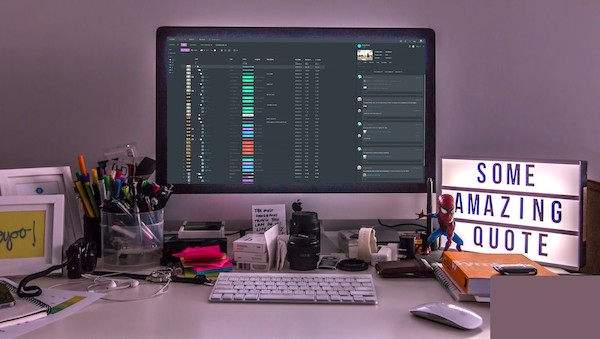
More from the blog
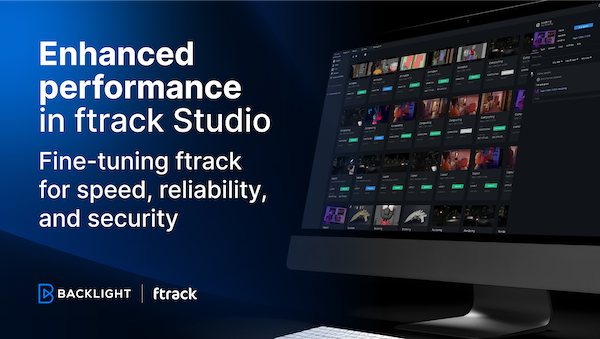
Enhanced performance in ftrack Studio: Fine-tuning for speed, reliability, and security
Chris McMahon | API, Developer, New features, Product, Productivity, Studio | No Comments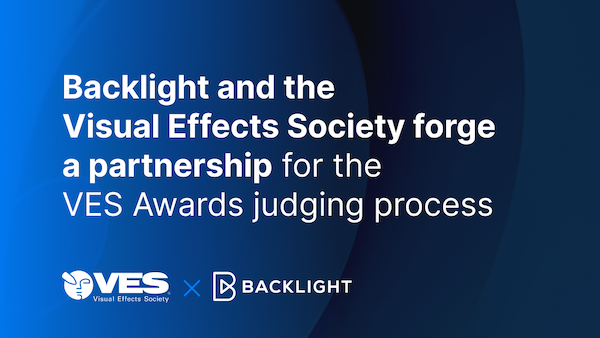
Backlight and the Visual Effects Society forge a partnership for the VES Awards judging process
Kelly Messori | Case Study | No Comments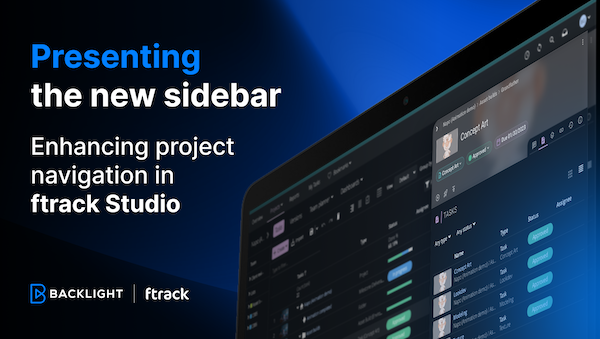
Presenting the new sidebar: Enhancing project navigation in ftrack Studio
Chris McMahon | New features, Product, Release, Studio | No Comments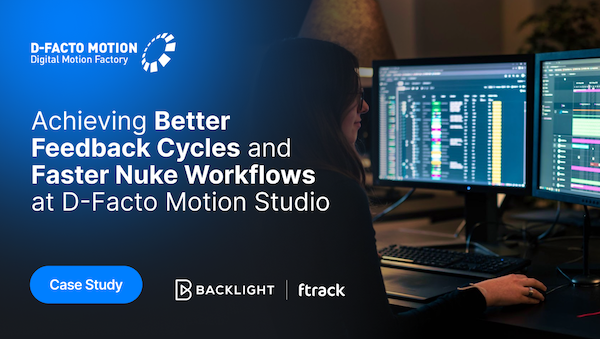
Achieving Better Feedback Cycles and Faster Nuke Workflows at D-Facto Motion Studio
Kelly Messori | Case Study, Studio | No Comments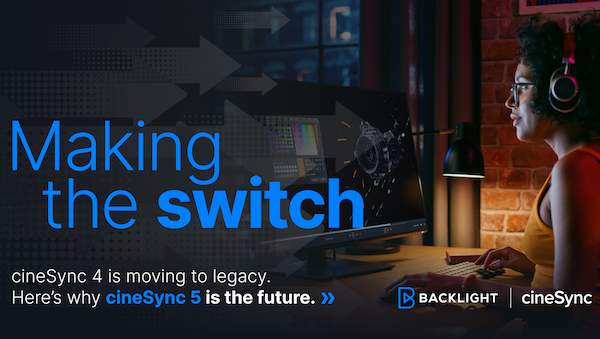
Making the switch: The transition to cineSync 5
Mahey | Announcements, cineSync, News, Product | No Comments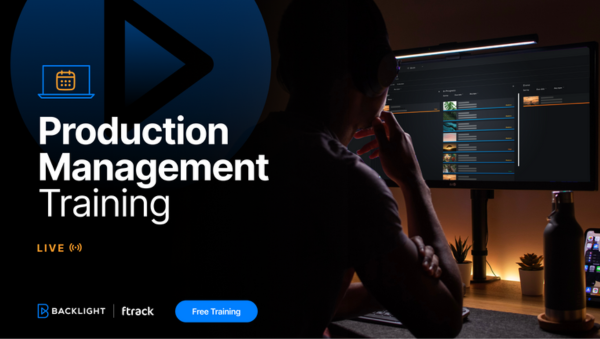
Supporting Your Studio: Free ftrack Studio Training and Office Hours from Backlight
Kelly Messori | News | No Comments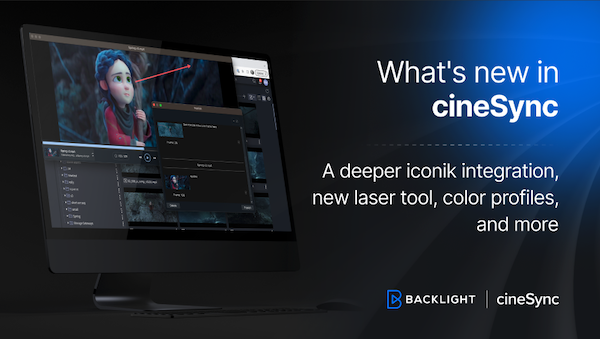
What’s new in cineSync – a deeper iconik integration, laser tool, OTIOZ support, and more
Chris McMahon | cineSync, New features, Product, Release | No Comments









